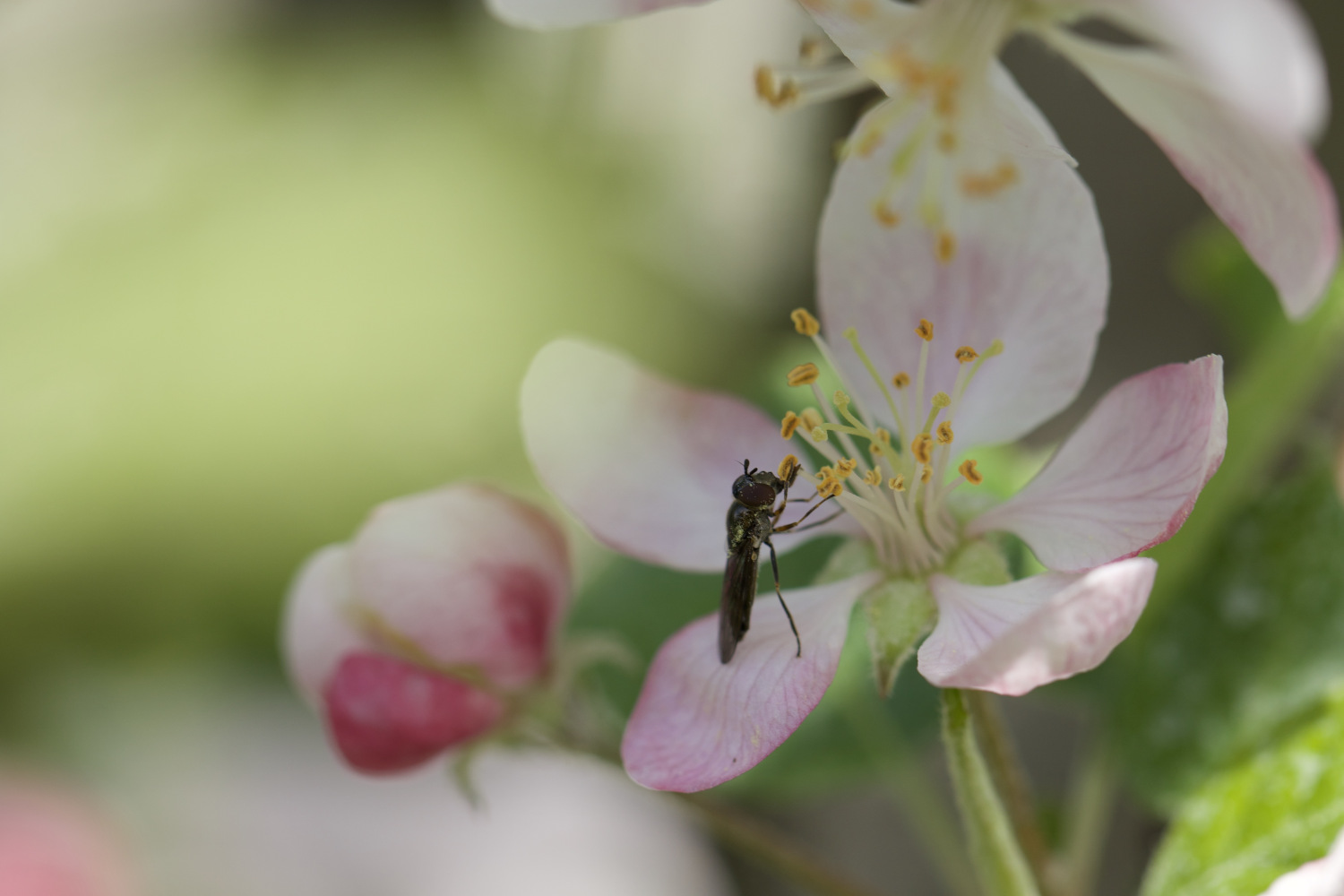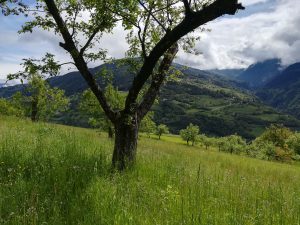Project description and objectives: Pollinator insects, most notably wild and honeybees, as well as hoverflies, are irreplaceable for the production of fruits and seeds of many wild and cultivated plants. The goal of this project is to find out which other insects besides honeybees are present in apple orchards and visit the flowers, thus contributing to flower pollination. We also want to find out if apple orchards that are surrounded by semi-natural landscape features (e.g., hedgerows, running waters, etc.) have higher numbers of wild flying insects and if higher landscape diversity has a positive effect on apple blossom pollination rates.
Methods: The studies take place in a total of 14 orchards, all sites of the BMS standard program. The sites are evenly distributed over the South Tyrolean orchard areas.
In the first part of the investigation, we select three trees per site and two branches on each of these trees. We wrap one of the selected branches with a net, and the other selected branch on the same tree serves as a control. In this way, we want to understand whether and how many apples can develop when pollinator insects are absent.
In the second part of the study, we apply so-called colored pan traps during apple blossoming. We use only white colored trays because the apple blossoms are also white or white-pink colored. The colored pan trapes are placed over a period of three weeks once a week for 2 days each. Each time, we deploy nine color trays per site.
The project is carried out by Sebastiano Zanini, PhD student at the University of Innsbruck in collaboration with BMS staff.
Partners: Institute of Ecology, University of Innsbruck
Contact: For further information contact Sebastiano Zanini Sebastiano.Zanini@uibk.ac.at or Lisa Obwegs Lisa.Obwegs@eurac.edu
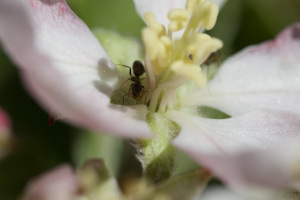
Even ants visit the flowers. ©Sebastiano Zanini 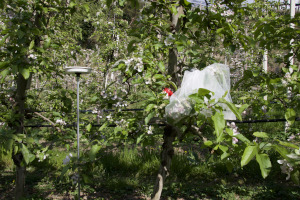
Coloured pan traps and net. ©Sebastiani Zanini 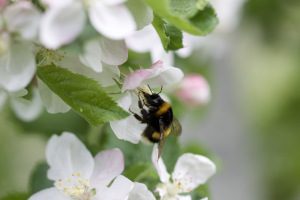
There are quite some visitors besides the honeybee. ©Sebastiano Zanini

